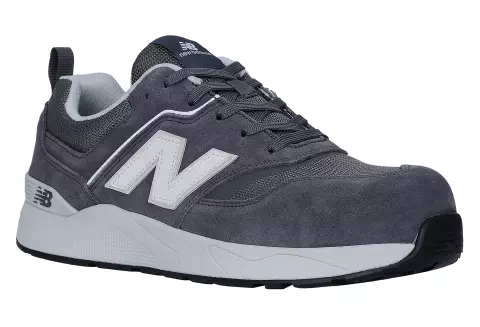Automated Spend Analysis: Key Benefits
Introduction: Controlling expenses and optimising procurement procedures are essential for growth and profitability in a complicated corporate environment. Organisations seeking...

Get 20€ off on your first order!
The expenditure cube helps procurement departments analyse past spend data. By presenting data in a multidimensional cube, stakeholders or departments can analyse purchase subcategories, compare supplier spending, and identify organisational trends. Visualising the three-dimensional cube helps identify patterns and abnormalities that are hard to see otherwise. Thus, spend cubes can help businesses improve cost control and understand their spending tendencies.
With the expanding globe, firms are learning how to save more and maintain a good reputation, even internally. Spend Cube analysis has become popular. An organisation that wishes to grow should learn how Spend Cube or Spend Cube analysis works.
The term “spends cube” refers to spend data presented in a multidimensional cube with three central components. Each unit has its own suppliers, corporate business, and item category. These three divisions also target distinct organisations and cost centres with subcategories.
The spend analysis procedure produces a spend cube for data viewing. Different perspectives might be taken on previously analysed data. If the company manages percentages of all key expenditures in multiple business units, a spend cube is necessary.
Other categories are shown by the three spend cube axes, explained here:
The three spent cube shows that the model collapses if any of its sides are missing, proving that each axis conveys important information.
First, category analysis shows a company’s products and services. The following section, Cost Centre analysis, reveals what drives demand among the company’s functions, such as end customers. Supplier analysis, the third stage, exposes your existing funding source. This information is useful if the company’s expenses are not organised and cumulative and the supplier has many contracts.
The organisation or firm might set strategies after gathering data. You can divide the data into little chunks to analyse it from various angles. It keeps one sourcing approach in use with no others. Slicing and dicing data lets you identify end users and suppliers for business renegotiations.
Understanding spending helps a corporation analyse its performance, which is advised. The approach lets organisations see suppliers’ spending to lower product costs and boost efficiency. Transparent communication about spending and goals affects the supplier relationship.
The companies collect, clean, and categorise the data for analysis using advanced analytics tools. The programme automatically views the process through a spend cube.
Put all the merged pieces together to solve the Spend cube, like kids and grownups do. Spend Cube also investigates how elements were blended. Companies can better comprehend supplier, business unit, and category financial circumstances using the three-dimensional method. The company makes good long-term judgements on what to keep, what to omit, where to spend, and how much to spend.
The companies collect, clean, and categorise the data for analysis using advanced analytics tools. The programme automatically views the process through a spend cube.
Spend a cube analyses spend in automated or AI systems. Data cubes contain supplier and business unit factors that AI systems must employ. It also divides business departments, firms, and locations. Spend analysis mostly analyses the quantities acquired by the company after categorising them.

/package

/package

/package

/package

/package

/package

/package

/package

/package

/package

/piece

/package

/package

/package

/package

/package

/pair

/package

/pair

/package

/package

/package

/package

/package

/pair

/package

/package

/package
Thus, the Spend cube is crucial to procurement since it finds irregular purchases. If a company’s data shows it bought many mechanical supplies without a necessity, it can stop doing so. By assessing current needs, the organisation can negotiate with the vendor to delete the collection, mostly optional.
Check the expenditure cube for leverage spending and any other sources, including the popular vendor for replacing excellent providers. Saving for insufficient time can also be included.
Thus, Spend Cube’s three-dimensional representation shows suppliers, major corporate units, and item categories.
The multidimensional Spend cube answers three questions with spend data.
As mentioned, all three queries address important processes.
Spend analysis yields actionable information in practically every area, from purchase price variance to supplier variety to cross-business unit purchases. The data drives wiser, data-driven business decisions on all company purchases. The study yields actions to boost purchasing efficiency, cut costs, and lower supplier risk.
Many well-known corporations prioritise investing data analysis because they house thousands of suppliers. Thus, the spend cube is an excellent tool for professionals seeking long-term business success. Regularly reviewing data through a spend cube without underestimating its importance improves corporate growth and development decisions. Because of its power, millions of procurement heads and experts use the spend cube to resource team members.
Spend analysis has many advantages for procurement firms.
If the head of procurement understands spend categories, the organisation has established a well-resourced staff. Spend cube even helps waste management firms by dealing with suppliers who handle extra purchases for routine operations.
The procurement manager for the category of items must assess class spending and supplier count before designing the sort strategy. Professionals must comprehend spend leverage for building information and supplier RFIs. It also helps professionals clarify demand profiles and RFPs. It also handles supplier reclassification.
Professionals can see these results from continuous spend cube utilisation.
If the new supplier requests a process, it must be handled properly to avoid the supplier from adding to the spend category. It improves PSL compliance.
Spend cube reviews current market and national market needs. It also reduces the number of providers from 11 to 5 in each category, making supplier selection easier. So, you can find 5 PSL suppliers with perks like these.
The three-dimensional expenditure cube helps professionals analyse the items and services they need to buy. This helps analyse the organization’s demand for goods and services and identify the supplier offering the service cost.
Online Analytical Process, the top technology, has created a successful expenditure cube system. It manages all finance department applications and provides business and procurement intelligence. Thus, data consolidation, categorization, and linkage must be changed to improve cube review as the system handles it. As data is contextualised, different regions are better taken.
varied spending cubes are generated by catering to varied spend dimensions. Different sorts of unique spend analysis are used to analyse a lot of data that cannot be handled otherwise.
The following analysis kinds help gather data.
Analysis of contract spending to ensure compliance and improve contract management. It optimises terms and conditions and raises prices from optimal providers.
Per-term payment analysis streamlines procure-to-pay to prevent waste and fraud. It facilitates maverick spending by examining payment trends and order cycles. Bottlenecks that are difficult to manage are also approved. Other than that, cash flow gains are fully visible. Early payment and special savings reductions are covered.
Tail spending analysis shows all indirect spending purchases, mimicking rough expenditures. Transaction data monitoring improves internal compliance by optimising the supply chain process with vendor consolidation.
Vendor spending analysis shows the company’s overall spend, mostly on the essential supplier. It supports supplier management and strategic sourcing by measuring supplier performance. An assessment of supplier compliance is also considered for optimal performance. Additionally, it lowers suppliers and develops contingencies for all materials-producing commodities and services.
Spend category analysis categorises all purchasing dimensions. Better professional communication is needed to improve category management, supply chain management, internal spending control, and contract administration. It involves more accurate business forecasting to lower management risks.
Analysis of item spending demonstrates system redundancy and inconsistency by line-it expenditure. It can reveal confidential information like Plant A and B are buying specific things from different suppliers at different prices, which suggests the corporation is incurring excessive costs that must be detected and stopped immediately. It exposed maverick spend and selected the vendor based on optimal value.
To achieve continual improvement, organisations must devote time and dedication to evaluate and analyse performance to gain insight into their current processes. These companies’ teams must enhance efficiency for effective spending management.
Thus, spend analysis is ideal for monitoring and enhancing strategic sourcing and other procurement processes. It affects company value generation and the supply chain that underpins competitive profitability.
Spend Cube Analysis analyses firm spending data to increase performance and profit.
Here are the key spend cube analysis components.
Spend analysis sets spending data baselines and aids strategic procurement. It emphasises financial planning and organisational goals. It also lowers total cost of ownership and boosts ROI for outsourcing procurement to save money and add value.
Choosing groups to analyse the company’s overall spending helps analyse product categories. Products, suppliers, departments, and business units are the primary subcategories.
Spend data is extracted, including consolidation from multiple formats. This firm relies on ERP or Enterprise Planning Systems and other data formats. It covers accounting, office, and Microsoft Excel data tracking and management tools.
Purchaser software can easily create limited data from diverse data.
Data removal or cleaning checks for errors and file corruption. As specialists analyse the data and remove inaccuracies, redundancies are addressed. In this stage, professionals remove extraneous stakeholders and suppliers and update records with current information.
After cleansing, organisations polish and standardise raw data in development. Experts correct file format and tagging. The system adds and corrects category codes simultaneously.
Suppliers refine spending data through categorization. Data is sorted into relevant groups, and copier maker products are categorised by supplier. You can also separate products by department and unit demand. The grouping is safe, so all transaction and expenditure data is attached and easy to analyse. An individual categorization or taxonomy can be used to study and change the data.
Evaluation or analysis involves data collection, cleansing, and categorization. It also provides and verifies facts using data analytics. The internal control system helps purchasers receive items and services from certain providers. The rules experts must follow to succeed are the most crucial parts of a product supply chain.
They must verify that spending patterns determine the appearance. With TCO metrics, which products need improvement? The procurement team may create a great functional expenditure cube with full data consolidation.
Spend cube analysis can help you make better business decisions and save more. A spend cube, resembling a crystal ball, can elevate your firm. Only by investing in your finance and procurement teams can you reach the skies in the future. Here are ten proven methods spend cube analysis can boost your business.
Statistics help firm starts and professionals assess data health. Keep an eye on present spending to rapidly assess your business’s future. In the continually changing economy, companies require help checking effective and efficient saving levers. If you spend a lot, you may need to know what.
Companies often overlook their expenditure stories. You can readily determine what activities are keeping your business healthy if you can correlate the business’s success behaviours. Analysing industry expenditure stories helps organisations determine if they need to negotiate product or service prices and make better financial decisions based on different methods.
After learning the expenditure narrative, the company may swiftly choose the appropriate plan from two perspectives. The expenditure cube measures category management programme effectiveness from two perspectives. Understanding the need to reclassify requirements, such as category status or work, is the first step. This example comes from the IT outsourcing segment that buyers can replace. To discover better value, companies can track savings or risk reduction with line-item data. Business benefits from spend cube analysis.
Second, organisations need line-item data to track savings, reduce leakage, and show higher value. Set category management technique and spend cube can go further.
The economy fluctuates, and prices rise or fall. The pricing you chose five years ago may not be adequate now. Thus, the Spend cube helps decide whether to reroute negotiations or concentrate spending. It also determines if a supplier can improve collaboration and reduce transactional behaviour. Spend cube analysis results include trust, decision security, relationship flexibility, and replaceable plans.
Spend cube research also examines whether a corporation spends on minority groups like women-owned businesses, which is unique but essential. It demonstrates the company’s efficiency and provides social security to the disregarded.
Further research asks questions like if the provider meets sustainability standards. Professionals can use spending data to enhance the company’s programme impact choice, boosting the bottom line.
Any company’s geographical geography might change, so if it understands these transitions, it can identify the hazards. Thus, successful company leaders can more easily manage risks.
The spend cube is an excellent tool that highlights noncompliant expenditure by time frame. The most attention-grabbing procurement level is examined. The wonderful line-item-based point assists the firm find fraud or crimes.
Checking the health of existing processes is the next most important identification, which answers whether purchase decisions affect stakeholders’ preferences. It also examines cross-department communication and how to strengthen relationships and work to enhance quality.
If professionals can qualitatively link spending to contract data, they can quickly negotiate vendor renewals. It directly cuts delayed renewal fees and new discounts on mostly absent products. It also identifies contract components like the saving date and duration to check future deliveries.
The preceding 10 reasons demonstrate that spend analysis visibility can improve the company’s overall departmental operations by exposing everyone to accountability.
Tracking firm spend involves many sorts of spending analysis. The organisation can choose the right class from the several styles to meet their needs.
The organisation buys various products from suppliers, thus data visibility helps track expenditure. This entire insight in indirect spending helps the organisation make informed buy quality decisions. The corporation carefully selects what to buy and what to omit over time. Internal compliance improves, affecting organisation efficiency. The technique removes erratic spending and aligns the company.
Strategic sourcing and supplier management require supplier spend analysis to work well. Through this analysis, the organisation can receive top supplier data and evaluate performance. The total percentage of firm spending for each supplier is also examined. Systematic supplier evaluation gives the organisation a more fact-based approach to supplier consolidation. It enhances customer development and service excellence.
This category-level expenditure study investigates firm spending for strategic planning. Planning important materials and commodities helps identify where money is moving and design a new money transaction strategy. Using meaningful data, category spending analysis improves corporate performance and management through supply chain contracts. It also includes business risk forecasting and management internal controls.
The last sort of analysis helps the organisation avoid redundancies and other anomalies among departments. It manages the purchasing department and shows maverick expenditure in its areas. It helps choose subpar vendors.
Thus, spend Cube and analysis help companies analyse spend data. This helps companies track the consistent growth every business wants. Companies can trust Spend Cube Analysis because the processes help them manage procurement well. Need analysis can be done regularly to determine if manual or software-based spend analysis is needed.
Spend cubes show an organization’s expenditure statistics in multiple dimensions. It helps procurement and supply chain managers obtain insights, make data-driven decisions, and optimise procurement strategies. Organisations can find cost-saving possibilities, bargain effectively with suppliers, and improve procurement efficiency by organising spending data into cubes.
The following are typical spend cube components:
Procurement expenditure cube analysis examines spending data to get insights and advise decisions. Organisations benefit from this analysis:
A multidimensional spend cube organises, analyses, and visualises procurement and supply chain expenditure data. It organises spending data into cubes for exploration by supplier, category, area, and time period. Spend cubes help procurement experts understand their organization’s purchasing habits, make data-driven decisions, and optimise procurement strategy for cost savings and efficiency.
Invoices, purchase orders, and financial systems provide spending data. Data extraction, transformation, and loading (ETL) integrates this data into the expenditure cube. Data is cleaned, structured, and organised to ensure cube correctness and consistency.
Benefits of spend cubes include:
SMEs can profit from expenditure cubes. Spend cubes can help SMEs understand their procurement procedures, even though large companies have more spending data. Spend cubes help optimise supplier relationships, discover cost-saving opportunities, and increase procurement efficiency for smaller organisations with limited data volumes.
expenditure cube production and analysis are possible with specialised expenditure analysis and procurement software. Data connectivity, cube visualisation, drill-down, and reporting features make expenditure cubes easier to use for procurement optimisation with these tools.
The organization’s needs and spending volatility determine spend cube update frequency. Some companies update their spend cubes monthly, others quarterly or annually. The cube must be updated often to reflect current spending trends and enable rapid decision-making.
Supplier diversity efforts can benefit from spend cubes. Spend cube analysis helps companies analyse and assess their spending with minority-owned, women-owned, and small businesses. This helps organisations evaluate their supplier diversity efforts and discover ways to promote underrepresented suppliers.
Organisations use strong access controls and encryption to protect data. Only authorised individuals should access sensitive spend cube data. To protect expenditure data, organisations should follow data privacy laws and industry standards.
Spend cubes are multifunctional. They are simple tactical and strategic tools. While useful for daily procurement decisions. Long-term strategy planning can benefit from their insights. Spend cube analysis helps companies uncover strategic opportunities and industry trends. It can help align procurement strategy with business goals.
Data correctness and integrity are essential. Companies do this by validating and purifying data during integration. Spend cube errors are found and fixed by regular data quality assessments. Data accuracy is maintained via explicit data governance principles and responsibilities.
Spend cube best practices exist by industry. Sectors may have different buying objectives. Companies in certain industries customise their expenditure cube analysis to these nuances. Healthcare organisations may prioritise pharmaceutical spending, while manufacturing enterprises may prioritise raw materials.
The ROI of a spend cube deployment depends on its cost reductions and efficiency gains. To measure ROI, organisations can compare pre- and post-cube adoption parameters including procurement costs, supplier performance, and cost reductions. Additionally, procurement professionals and stakeholders can provide qualitative input on expenditure cube advantages.
Thank you! You've signed up for our newsletter.


















Introduction: Controlling expenses and optimising procurement procedures are essential for growth and profitability in a complicated corporate environment. Organisations seeking...

Introduction No matter its size, organisation success depends on expense control. From freelancers to huge enterprises, software licences, marketing, and...

Introduction: Agile innovation has revolutionised IT and become the gold standard in software development. Its impact goes beyond IT, affecting...
Introduction: Controlling expenses and optimising procurement procedures are essential for growth and profitability in a complicated corporate environment. Organisations seeking...

Introduction No matter its size, organisation success depends on expense control. From freelancers to huge enterprises, software licences, marketing, and...

Introduction: Agile innovation has revolutionised IT and become the gold standard in software development. Its impact goes beyond IT, affecting...
Get 10€ off on your first order!
Save 30% by buying directly from brands, and get an extra 10€ off orders over €100
Save 30% by buying directly form brands, and get an extra 10€ off orders over €100